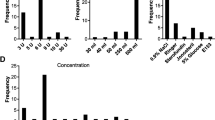Abstract
Purpose
The objective was to study the association of different timings of intrapartum interventions with labour duration and mode of birth.
Methods
A longitudinal cohort study of 2,090 nulliparae and 1,873 multiparae with a singleton in cephalic presentation was conducted. We assessed the association between, on the one hand, the timing of augmentation with oxytocin, neuraxial analgesia and amniotomy, and, on the other hand, the time to complete dilatation, spontaneous or operative vaginal delivery or caesarean delivery, using a Cox regression model accounting for standard confounders.
Results
From amniotomy onwards labour was accelerated. In multiparae, amniotomy was associated with an initial 6.6-fold acceleration, decreasing first stage duration until the hazard ratio reached around 3.5, where the intervention was performed 5 h after labour onset; thereafter, acceleration continued with a hazard ratio of around 3. In nulliparae, neuraxial analgesia was associated with a shorter first stage when administered between 7 and 11 h after labour onset; the later it was performed, the less likely was spontaneous birth and the more likely an operative vaginal birth in nulliparae or a caesarean section in multiparae. The start of oxytocin augmentation was associated with acceleration towards both full dilatation and caesarean section during first stage and an increased risk of operative vaginal birth during second stage. The later oxytocin augmentation started, the more likely it was that spontaneous birth would be retarded in multiparous women.
Conclusions
Applying amniotomy, oxytocin and neuraxial analgesia at their optimal timing may improve the progress and outcome of labour.





Similar content being viewed by others
References
Chalmers I, Enkin M, Keirse MJNC (1989) Effective care in pregnancy and childbirth. Oxford University Press, Oxford
Wang FZ, Shen XF, Guo XR, Peng YZ, Gu XQ (2009) Epidural analgesia in the latent phase of labor and the risk of cesarean delivery. Anesthesiology 111:871–880
Wei S, Wo BL, Qi HP, Xu H, Luo ZC, Roy C, Fraser WD (2012) Early amniotomy and early oxytocin for prevention of, or therapy for, delay in first stage spontaneous labour compared with routine care. Cochrane Database Syst Rev 2013(3):CD006794. doi:10.1002/14651858.CD006794.pub3
Wong CA, McCarthy RJ, Sullivan JT, Scavone BM, Gerber SE, Yaghmour EA (2009) Early compared with late neuraxial analgesia in nulliparous labor induction: a randomized controlled trial. Obstet Gynecol 113:1066–1074
Ohel G, Gonen R, Vaida S, Barak S, Gaitini L (2006) Early versus late initiation of epidural analgesia in labor: does it increase the risk of cesarean section? A randomized trial. Am J Obstet Gynecol 194:600–605
Halpern SH, Abdallah FW (2010) Effect of labor analgesia on labor outcome. Current Opin Anaesthesiol 23:317–322
Clark SL, Simpson KR, Knox GE, Garite TJ (2009) Oxytocin: new perspectives on an old drug. Am J Obstet Gynecol 200:35.e1–35.e6
Bugg GJ, Siddiqui F, Thornton JG (2011) Oxytocin versus no treatment or delayed treatment for slow progress in the first stage of spontaneous labour. Cochrane Database Syst Rev 2011(7): CD007123. doi:10.1002/14651858.CD007123.pub2
Mori R, Tokumasu H, Pledge D, Kenyon S (2011) High dose versus low dose oxytocin for augmentation of delayed labour. Cochrane Database Syst Rev 2011(10): CD007201. doi:10.1002/14651858.CD007201.pub2
Sharma SK, McIntire DD, Wiley J, Leveno KJ (2004) Labor analgesia and cesarean delivery. An individual patient meta-analysis of nulliparous women. Anesthesiology 100:142–148
Smyth RMD, Alldred SK, Markham C (2007) Amniotomy for shortening spontaneous labour. Cochrane Database Syst Rev 2007(4):CD006167
Petersen A, Ayerle GM, Frömke C, Hecker H, Gross MM (2011) The timing of interventions during labour: descriptive results of a longitudinal study. Midwifery 27:e267–e273. doi:10.1016/j.midw.2010.10.017
Vandenbroucke JP (2004) When are observational studies as credible as randomised trials? Lancet 363:1728–1731
Zhang J, Troendle J, Mikolajczyk R, Sundaram R, Beaver J, Fraser W (2010) The natural history of the normal stage of labor. Obstet Gynecol 115:705–710
Vahratian A, Troendle JF, Siega-Riez AM, Zhang J (2006) Methodological challenges in studying labour progression in contemporary practice. Paediat Perinat Epidemiol 20:72–78
Laughon SK, Branch DW, Beaver J, Zhang J (2012) Changes in labor patterns over 50 years. Am J Obstet Gynecol 206:419.e1-9
Neal JL, Lower NK, Ahijevych KL, Patrick TE, Cabbage LA, Corwin EJ (2010) “Active labor” duration and dilation rates among low-risk, nulliparous women with spontaneous labor onset: a systematic review. J Midwifery Wom Health 55:308–318
Schiessl B, Janni W, Jundt K, Rammel G, Peschers U, Kainer F (2005) Obstetrical parameters influencing the duration of the second stage of labor. Eur J Obstet Gynecol Reprod Biol 118:17–20
Treacy A, Robson M, O’Herlihy C (2006) Dystocia increases with advancing maternal age. Am J Obstet Gynecol 195:760–763
Deutsche Gesellschaft für Gynäkologie und Geburtshilfe e.V. Leitlinien, Empfehlungen, Stellungnahmen (2006) Medikamentöse Wehenhemmung bei drohender Frühgeburt. AWMF 015/025. URL: http://www.dggg.de/leitlinien-2006/pdf-2006/4-perinat/4-3-1-med-wehenhemmung.pdf(2007)
Gross MM, Wenzlaff P, Haeseler G, Hecker H, Schneider M (2005) Geburtshilflich-anästhesiologische Klinikprofile in Niedersachsen. (Obstetrical-anaesthesiologic clinic profiles in Lower Saxony). 22. Deutscher Kongress für Perinatale Medizin, Berlin 01.-03.12.2005. Z Geburtshilfe Neonatol 209:S104
Smith GCS, Pell JP (2001) Use of time to event analysis to estimate the normal duration of human pregnancy. Hum Reprod 16:1497–1500
SPSS for Windows (2005) Rel. 14.0.0. SPSS Inc., Chicago
Blossfeld HP, Rohwer G (2002) Techniques of event history modeling, 2nd edn. Lawrence Erlbaum Associates, Hillsdale
R Development Core Team (2006) R: A language and environment for statistical computing. R Foundation for Statistical Computing, Vienna, Austria. ISBN 3-900051-07-0, URL: http://www.R-project.org
Petersen A, Poetter U, Michelsen C, Gross MM (2013) The sequence of intrapartum interventions: a descriptive approach to the cascade of interventions. Arch Gynecol Obstet. doi:10.1007/s00404-013-2737-8
Acknowledgment
This study was funded by the German Research Council (DFG).
Conflict of interest
None.
Author information
Authors and Affiliations
Corresponding author
Rights and permissions
About this article
Cite this article
Gross, M.M., Frömke, C. & Hecker, H. The timing of amniotomy, oxytocin and neuraxial analgesia and its association with labour duration and mode of birth. Arch Gynecol Obstet 289, 41–48 (2014). https://doi.org/10.1007/s00404-013-2916-7
Received:
Accepted:
Published:
Issue Date:
DOI: https://doi.org/10.1007/s00404-013-2916-7




